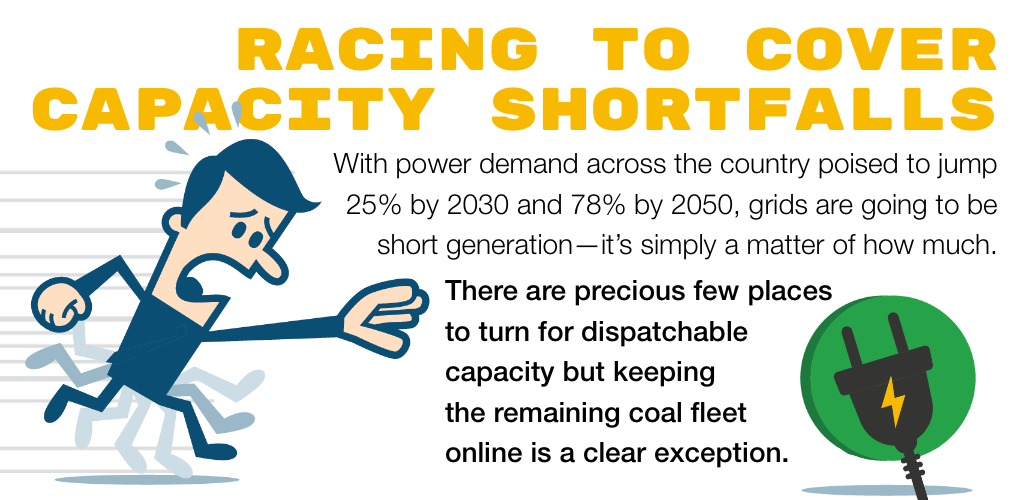
Racing to Cover Capacity Shortfalls
Need more evidence we’re in a power supply emergency? Look no further than how the nation’s grid operators are scrambling to fast-track interconnection of new dispatchable resources that can shore up eroding reliability.
From the Great Plains to New York, operators are frantically trying to revise interconnection processes to get new generation added to grids faster and prioritize resources that can bolster rapidly dwindling reserve margins. There is an urgency – bordering on panic – to meet rising demand and get more dispatchable power onto grids.
The Southwest Power Pool (SPP), with a grid stretching from eastern New Mexico up through North Dakota, was the latest grid operator to ask the Federal Energy Regulatory Commission (FERC) to approve its Expedited Resource Adequacy Study process, which would fast-track connection agreements for power plants.
In petitioning FERC, SPP officials were direct on the need, saying their grid is “on the precipice of a resource adequacy crisis.” SPP highlighted a study showing that by 2027 available generating capacity is projected to dip below required reserve margins, leaving the grid vulnerable to demand spikes and power plant failures that threaten to overwhelm supply.
The situation is so dire SPP projects it will have insufficient capacity to meet peak demand in 2030, instead facing a 17-gigawatt shortfall, equivalent to the power needed for 12 million homes. Remarkably, SPP warns that even if every power project included in the fast-track study comes online by 2030, it won’t be enough.
Across the country, New York Independent System Operator (NYISO) is also warning about eroding reserve margins.
“We must consider all options for investing in the grid to provide for reliability and certainty at the most efficient cost,” wrote NYISO President and CEO Rich Dewey. “The addition of new dispatchable generation needs to be considered in the near term to mitigate the dual risks of accelerated load growth and aging infrastructure,” he added.
“No need for further proof”
The Midcontinent Independent System Operator (MISO), which manages the grid covering much of the Midwest, is already facing razor-thin reserve margins and a potential 14 GW capacity deficit by 2029. Its attempt to reform its interconnection process and quickly get more dispatchable capacity online was voted down by FERC in May for being insufficient to address teetering reliability.
Even as FERC asked MISO to rework its proposal, FERC’s Chairman Mark Christie wrote, “One thing we know with no need for further proof: This country, including MISO, is heading for a reliability crisis caused by early retirements of dispatchable resources coupled with the failure to construct sufficient equivalent capacity, all while demand rises at an unprecedented pace largely driven by data center growth.”
While FERC has approved a fast-track process for PJM, the nation’s largest grid and wholesale market, it remains unclear if the interconnection reforms will deliver the desired results for reliability. PJM has selected 51 projects for fast-track review representing 11.8 GW of capacity, the majority natural gas generation. But even in PJM, which overlaps the prolific Marcellus shale gas field, existing gas power plants are pipeline constrained and have faced fuel delivery challenges during winter storms.
There’s simply no guarantee that any of this, on any grid, will make the kind of impact operators need. With power demand across the country poised to jump 25% by 2030 and 78% by 2050, according to recent analysis from ICF International, grids are going to be short generation. It’s simply a matter of how much.
There are precious few places to turn for dispatchable capacity but keeping the remaining coal fleet online is a clear exception. Doing so may well be the key difference between managing our mounting reliability crisis or watching it overwhelm an overstretched and under-supplied grid.
- On June 4, 2025
